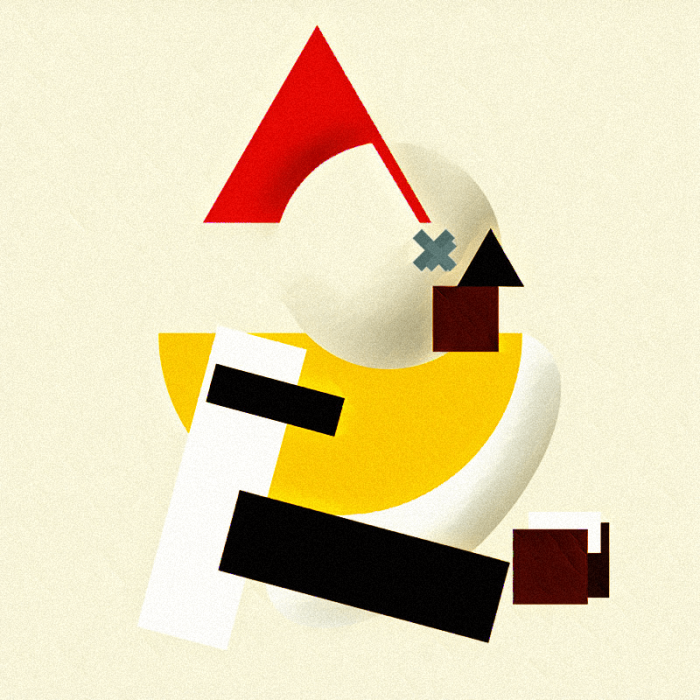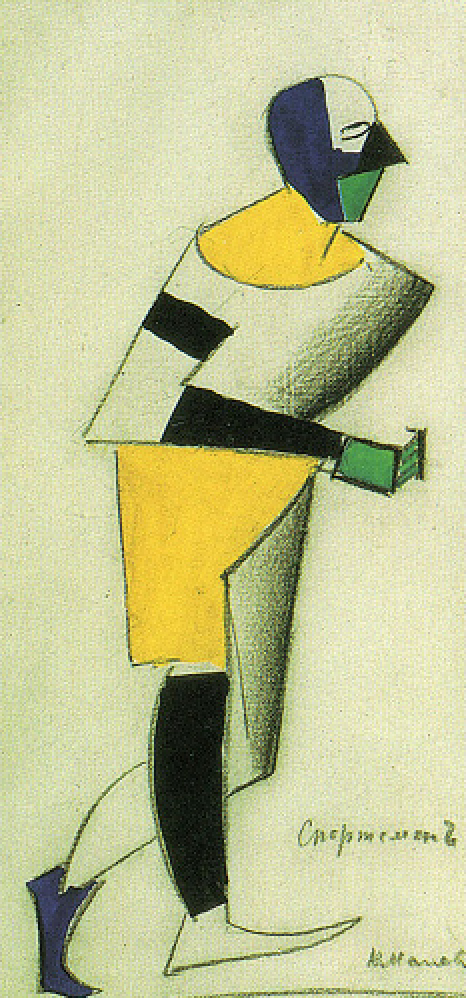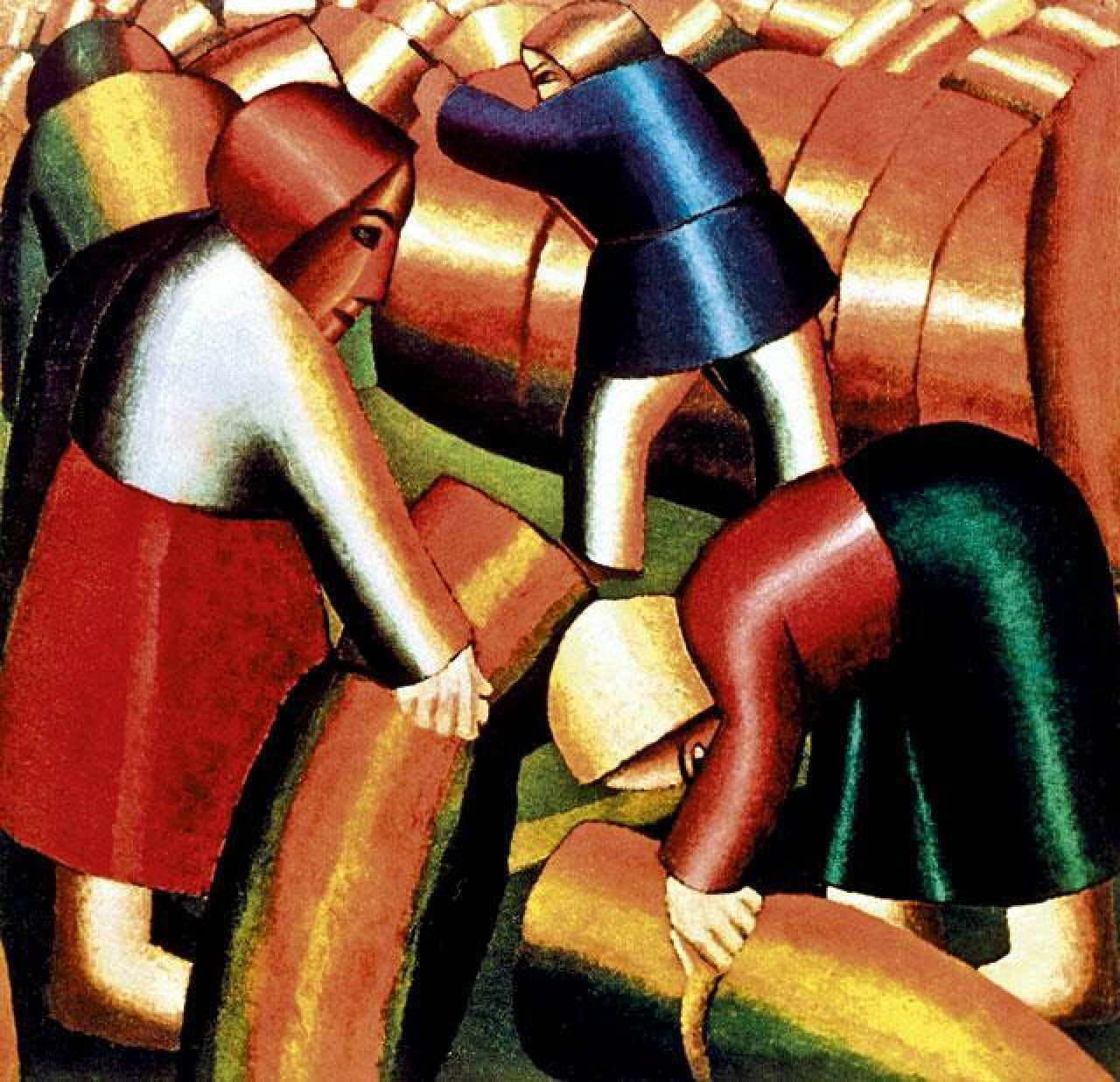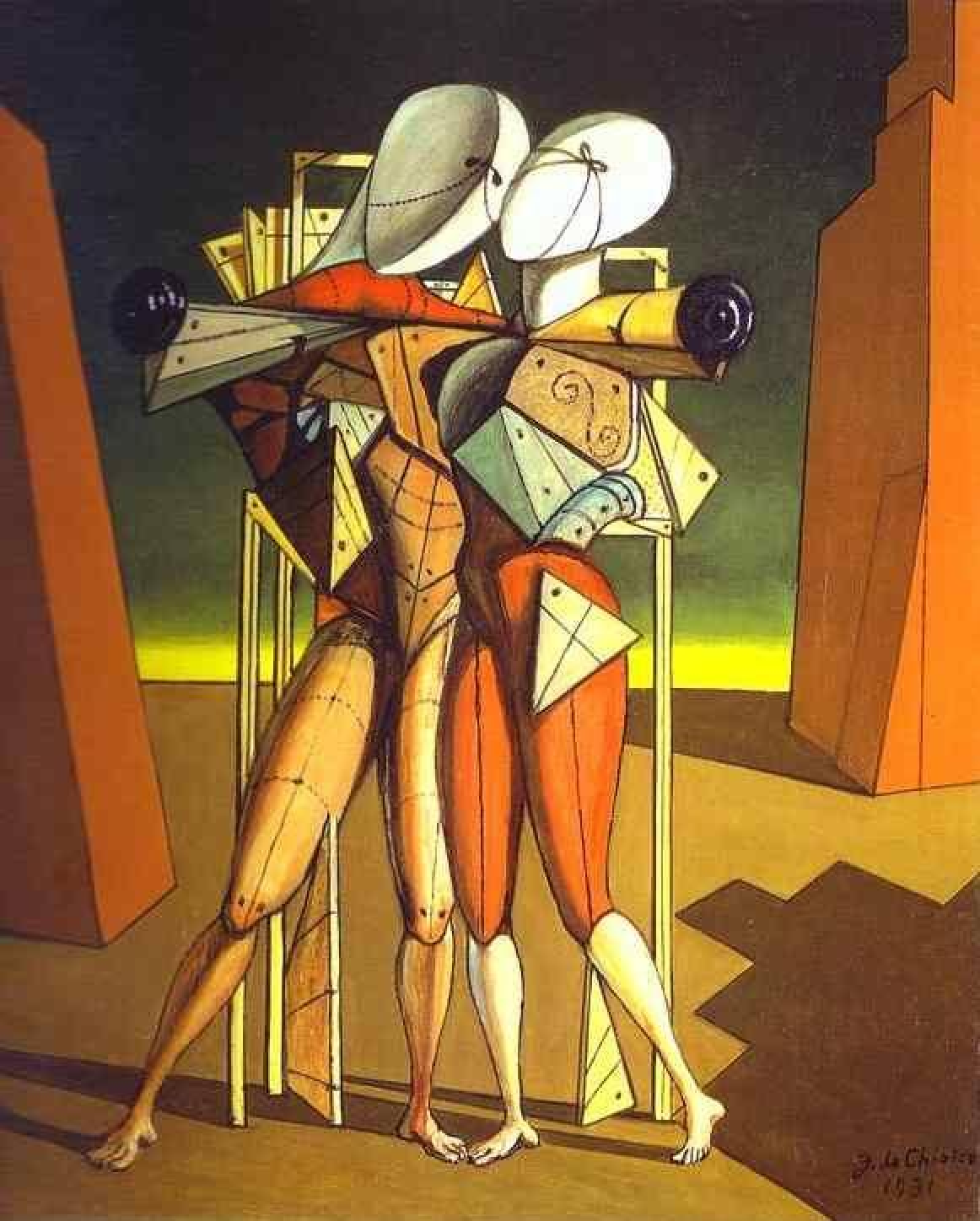SupremePunk #105

New Direction
This Punk is inspired by the CryptoPunk #4366 and the work of Kazimir Malevich. This artist is the most famous representative of the Russian avant-garde, his name symbolizes an entire era that still amazes and surprises viewers around the world.

Kazimir Malevich — The Athlete, 1913
The inspiration for the Punk was Malevich's painting "The Athlete". This work served as a sketch for the artist's numerous reflections on applied art, on modeling clothes. In the 19th century, avant-garde artists paid great attention to applied art: tableware, furniture, posters, fabrics and clothing. Malevich was no exception, during his creative career, in addition to numerous manifestos and suprematist works, he created a large number of sketches of costumes and scenery for the first ever cubo-futurist opera "Victory over the Sun". Malevich worked on this opera together with Mikhail Matyushin, Alexey Kruchenykh and Velimir Khlebnikov. It was when creating sketches for this production that Malevich first created sketches that remotely brought him closer to creating his most shocking work, The Black Square.
SupremePunk repeats Malevich's sketches with its general shapes and color. The colors of the painting are quite bright and juicy. The sunny color scheme creates a cheerful mood and sets the general mood of work. With the help of graphic shadows on the figures, the work becomes planned, the shape and general plasticity are felt. Despite the square format and dense layout on the sheet, the image in the picture does not seem static, the artist quite accurately creates a feeling of running due to bent arms that depict inclined black planes.

Kazimir Malevich — Taking in the Harvest, 1911
Despite the fact that Kazimir Malevich mostly depicted non-objective, static compositions, in his work he also created dynamic works. One of such works is "Harvesting". This painting is one of a small series of works in which the artist depicted peasant life. Many culturologists call these paintings imitation of icons, meaning by this similarity of paintings with sketches of fresco painting. Malevich always had his own unique view on the painting of icons. He attributed icons to the highest level of peasant art. At the same time, his opinion has its share of truth, since icons are actually the only kind of images that an ordinary person has encountered, while not a single house has been left without an icon.
In his works from the peasant labor series, Malevich discovered a new direction of his own style. The artist simplifies all the details of the painting to a primitive childish level. All the details have a very enlarged shape and deformation to give them a greater degree of expressiveness. The range of colors is combined with the style of the icon of scripture, and the plane of the works is made in the appropriate form. The very image of the village peasant, his everyday life, works are exalted and occupy the center of the composition. His peasants seem to be made of a new metal material, assembled from individual parts and details.

Giorgio de Chirico — Hector and Andromache, 1917
The rejection of the specifics of the image of the characters was also used in his work by Giorgio de Chirico. His painting "Hector and Andromache" is an excellent example of the transfer of the plot without using the specifics of the image of the characters. The heroes of de Chirico's paintings often become not only cities and symbolic objects, but also strange likenesses of people - phantoms, mannequins without faces. These artificial, bewildering and horrifying figures, with prosthetics instead of limbs, appeared in the artist's work under the influence of paintings by Fernand Leger depicting the so-called "mechanical people". In de Chirico's work, these mannequins become heroes of ancient myths, replacing plaster statues previously present in canvases. Depicted against the background of the same desert landscapes, they create a special reality, their own metaphysical world, similar to a dream or hallucination.
The idea of simplifying the image and removing common features of people was an innovation of avant-garde art. SupremePunk supports and develops this idea. The refusal to clarify makes the artistic image universal and unique, helps to convey the most basic idea without overloading the picture and making it understandable for every viewer.

Buy

Gallery:
CryptoPunk #4366 that has been taken as a base

Your transaction is in progress

You have connected to the wrong network

Transaction is successful!


